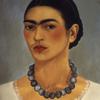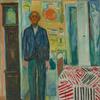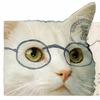Arts Initiative Across Maine Brings Forward Artists' Perspectives on Migration
- November 01, 2018 19:09
“…and when she went out it seemed to her that she too had migrated, that everyone migrates, even if we stay in the same houses our whole lives, because we can’t help it. We are all migrants through time.”
—Mohsin Hamid
Through November 4, 2018, Seeing Otherwise is on view at Colby College Museum of Art, in Waterville, Maine. As invoked in its name, Seeing Otherwise invites visual inquiry and discovery to challenge representations of migration and mobility in art. Whitfield Lovell, an artist featured in this exhibition, once observed that installations are about “the markings that the past has made—and continues to make—on who we are.”
Seeing Otherwise explores relationships between displacement and reinvention, inclusion and exclusion, presence and absence, and the multilayered presence of the past seeping into the present. Artists featured in this exhibition include Romare Bearden, Phong Bui, Lalla Essaydi, Whitfield Lovell, Meleko Mokgosi, Richard Mosse, Fred Wilson, Leo Rubinfien, and Alfred Stieglitz.
Seeing Otherwise is presented in conjunction with Making Migration Visible, a state-wide initiative in Maine featuring events by dozens of partnering organizations offering parallel exhibitions, film screenings, performances, lectures, community dinners, poetry, and more.
The artists in Making Migration Visible: Traces, Tracks & Pathways, at the Institute of Contemporary Art at Maine College of Art (ICA at MECA) challenge the idea that migration is an exception or a crisis, showing viewers that migration is now the norm, inscribed in our landscapes, memories, bodies, and imaginings. In conjunction with the exhibition, ICA at MECA will host a one-day symposium on ART + POLITICS on November 2, 2018. The exhibition continues through December 14.
“I hope the collaboration serves as a national model for how to bring a fresh perspective on immigration around the world,” said MECA President Laura Freid. “We often just look at the destruction and the immediate dislocation of people. It makes me hopeful to see creativity and collaboration and beautiful works of art resulting from experiences that were so unfortunate.”












100x100_c.jpg)







